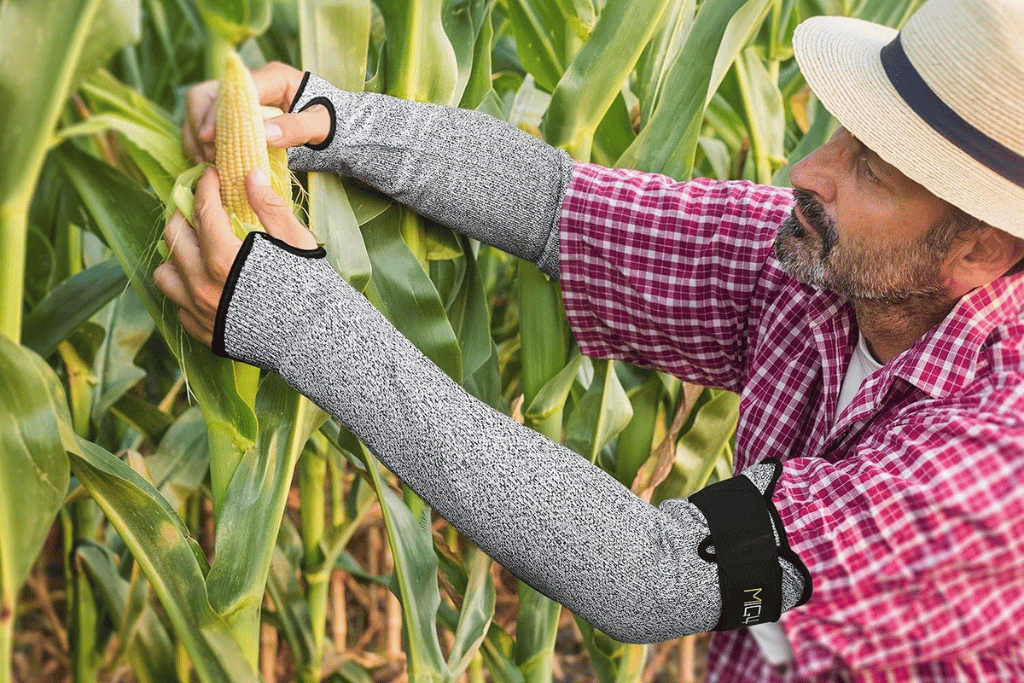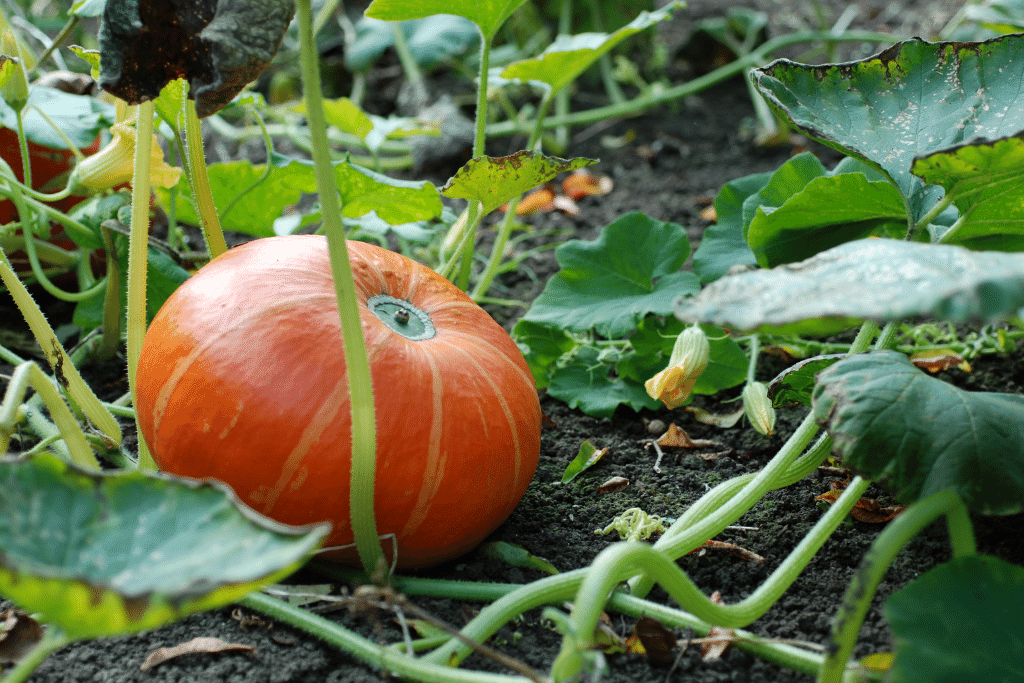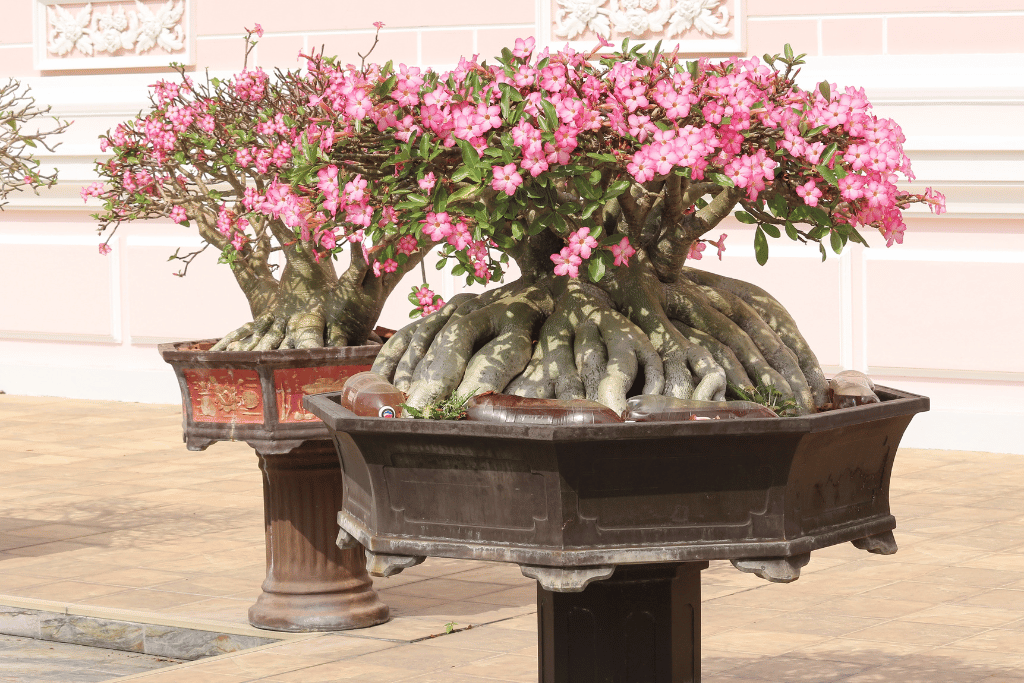
Adenium obesum, also known as desert rose, is a widespread species used for bonsai. This particular plant originates from tropical regions in Africa, in the Sahel and in Arabia. Desert roses are succulent shrubs with thick, bulbous trunks producing flowers with vibrant colors such as white, pink, red and yellow. It makes an excellent species to use for bonsai due to the unique trunk, thick branches and beautiful appearance of its leaves. In this article, we’ll discuss desert rose bonsai care and specifics such as watering needs, soil requirements, fertilizing and pruning.
So, let’s delve straight into how to care for a desert rose bonsai. Compared to other species, I’d say that desert roses are arguably easier, especially in regard to factors such as watering and pruning.
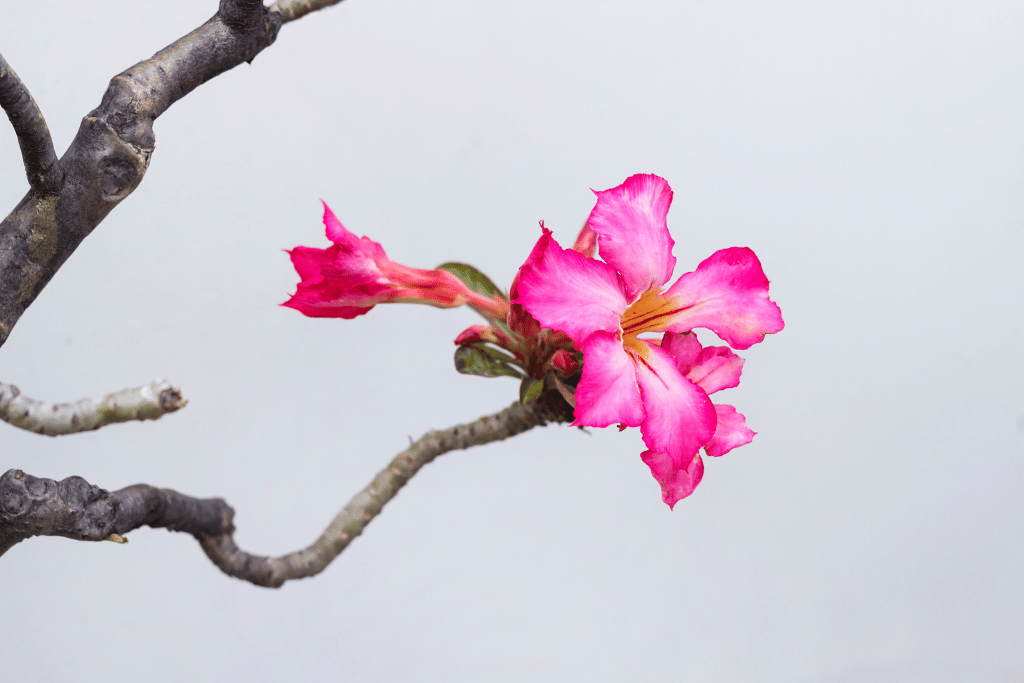
Desert Rose Bonsai
Watering
One of the most important aspects of keeping any plant alive is watering. Without water, your plants will suffer very quickly – but give them too much, and it’s likely that they’ll be affected by root rot, which could kill them just as quickly. Since the desert rose plant is a succulent, it’s able to store water in its thick trunk and branches. Therefore, it’s essential to try and avoid overwatering these, which can cause root rot and other diseases. Though, we don’t want to underwater it either, as this can cause wilting of the leaves, damaging the plant.
To properly water your desert rose bonsai, you should soak it thoroughly. You should then wait until the top inch of soil is dry before watering it again, making sure to hold off if it’s still moist or soggy. The water should drain out of the bottom of the pot when watered. Avoid getting water on the flowers or the leaves, as this could promote the growth of fungus and other issues. As autumn onsets, the water demand will start to decrease, meaning that you should reduce the frequency of watering to prevent root rot as the desert rose enters dormancy.
Soil
Having a good soil mix is vital for keeping a bonsai alive and well. If it’s too heavy, the bonsai won’t be able to grow as well – the growth rate may be reduced, and the plant may be more likely to be prone to pests and disease. With desert rose bonsai, the soil should be well-draining and free of any organic matter, which is very good at retaining moisture. Ideally, a mixture of gritty soil, perlite and coarse sand is generally a good mix for desert rose bonsai. The soil should be slightly acidic, with a pH of around 6.0-7.0.
Repotting is a vital process in the life cycle of a bonsai tree, and this typically comes every two to three years for younger trees, while older trees can be repotted around every four to five years. This will also depend on how vigorous the tree is. It’s best to repot your desert rose bonsai every two to three years using fresh soil, ensuring that you increase the pot size every time unless it’s ready to be placed into a bonsai pot.
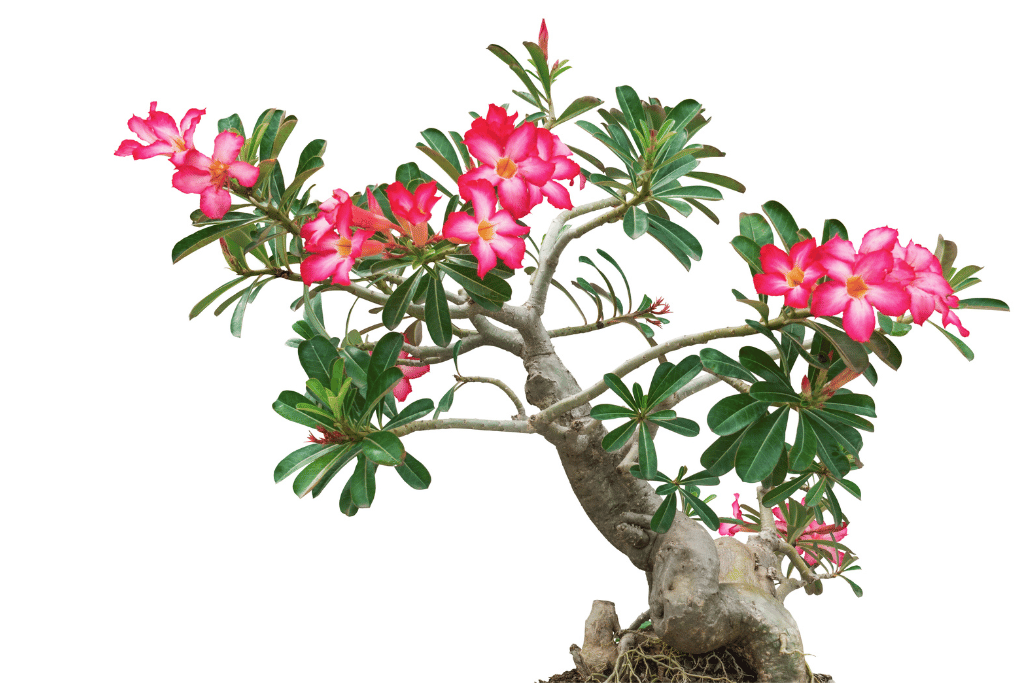
Pruning
Believe it or not, pruning is a healthy and crucial aspect of keeping desert rose bonsai and any other plant alive. Regular pruning will help to maintain the bonsai’s shape, promote branching and ramification, and help to control the size and proportions.
Your desert rose bonsai should be pruned in early spring before new growth starts to appear. Pruners should be clean and sharp to make clean cuts, preventing any damage to the plant from moisture or disease. Any dead, damaged or diseased branches or leaves should be removed, and the apex of the desert rose bonsai pruned to encourage branching and bushiness.
If your desert rose bonsai has a disease or a pest infestation, it’s best to sterilize your pruners with something such as alcohol after use, which will help to prevent the spread of any harmful things to your other trees.
Fertilizing
Feeding your plants is essential – especially when they’re kept in small and tight pots for most of their life. They won’t be able to get their nutrients from anywhere except you, so we need to ensure that our bonsai get plenty of fertilizer during the growing season.
Use a balanced fertilizer with equal parts of nitrogen, phosphorous and potassium in the growing season. Your desert rose bonsai should be fed around every two weeks, from spring to fall. When it comes to the winter months, you can reduce the frequency of fertilizing to once a month or stop altogether. I like to stop completely, but this is up to you.
Light
Light drives photosynthesis, and without it, your desert rose would be dead very quickly. Desert rose bonsai thrive in bright and indirect sunlight. They should be placed in a location that receives at least 4-6 hours of sunlight per day. Direct sunlight can scorch the leaves of the desert rose, so make sure that you don’t place it in direct sunlight for extended periods of time. If your plant doesn’t get enough sunlight, you may find that the growth will slow down, or it may not flower.
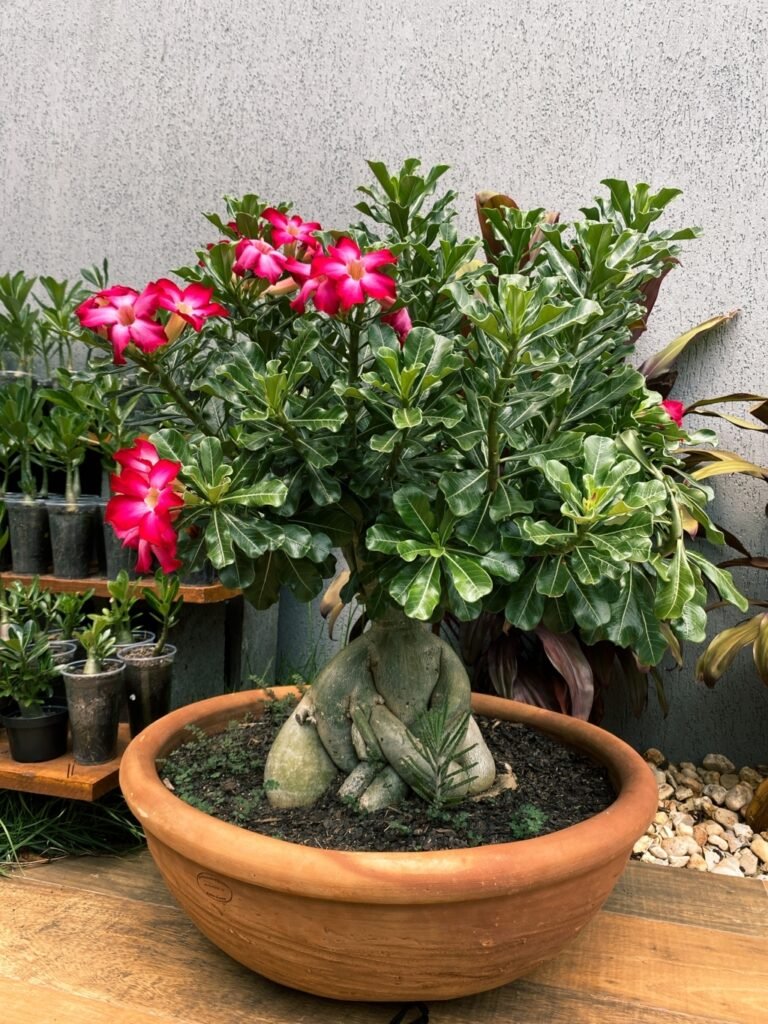
Temperature
Desert rose bonsai like to be kept on the warmer side, with temperatures between 15-32C (60-90F) due to its tropical nature. It’s not able to tolerate frost or extremely cold temperatures, so make sure that you give it a degree of winter protection depending on your climate. Keep your desert rose bonsai in a warm location, avoiding placing it near anywhere drafty or near air conditioning units or heating vents.
Pests and Diseases
Desert rose bonsai are particularly susceptible to pests and disease, including common pests such as spider mites, scale insects and mealybugs. To prevent these pests from becoming an infestation, make sure that you inspect your plants regularly and treat any infestations with an insecticide. I like to use neem oil, as this is cheap and very effective and won’t do as much harm to useful insects.
Pests aren’t the only thing you must watch out for on desert rose bonsai. Diseases can also hit desert rose bonsai hard, such as fungal infections, bacterial infections and root rot. To prevent these diseases, you should make sure that you’re not overwatering your desert rose bonsai and that the pot has good drainage. If you spot any signs of disease, such as brown spots or yellowing leaves, the affected parts should be treated and treated with a fungicide.
Final Thoughts
Overall, I’d say that the desert rose bonsai requires some attention to detail and a bit of patience, but it’s a rewarding experience to see those beautiful blooms strike you. With proper care, your bonsai will grow beautifully and bring beauty to your home or garden for many years to come. Remember to water it well, prune moderately, fertilize and provide proper light and temperature conditions to keep your desert rose bonsai happy.
Frequently Asked Questions (FAQ)
Should I mist my desert rose?
Ideally, it would be best if you were misting your desert rose bonsai every couple of days. This will help to increase humidity around the plant, which can aid in growth and help your bonsai’s health. You’ll find that many species like to be kept in high humidity, and this will assist in them putting on more growth. Make sure that you don’t go too overboard, though, as this can promote fungal infections forming, which can damage the plant if left untreated for an extended period of time.
Can a desert rose survive indoors?
As long as you are providing optimal conditions for your desert rose, it should be able to survive indoors. You might find that you’ll have to give it a few more hours of light as the light won’t be as strong when being obstructed by a window. If your summers are hot enough, then you should be moving your desert rose bonsai outside during the day and any of your other indoor trees. This will greatly help them. You can bring them in again at night unless the temperatures stay above what your species can tolerate.
What are common problems with desert rose?
As mentioned, many of the common problems people will run into when keeping Adenium obesum are overwatering, underwatering and particularly pests and diseases. Stem rot and leaf disease can pop up quite frequently with desert rose bonsai. Stem rot occurs on the tips of desert rose plants and progresses down the stem over time. Leaf rot occurs on adeniums when the leaf is continually wet, so make sure that you give your plant a break if you are continually misting it.
What happens if you touch a desert rose plant?
After touching or working with a desert rose plant, it’s recommended that you wash your hands and make sure that you don’t touch any other part of your body or sensitive parts, such as your eyes, before washing your hands. The sap of desert rose can disrupt the central nervous system, gastrointestinal tract, electrolyte levels and cardiovascular systems. Symptoms of adenium obesum poisoning are typically experienced within around 12-36 hours of exposure, including symptoms such as a reduced heart rate, lethargy, dizziness, low blood pressure and gastrointestinal problems. If you are experiencing any of this, make sure that you visit a doctor as soon as possible to be safe.


